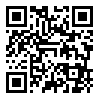
International Journal of Molecular and Cellular Medicine (IJMCM)
Babol University of Medical Sciences
Sun, Dec 7, 2025
[Archive]
Volume 4, Issue 1 (Int J Mol Cell Med 2015)
Int J Mol Cell Med 2015, 4(1): 9-21 |
Back to browse issues page
Download citation:
BibTeX | RIS | EndNote | Medlars | ProCite | Reference Manager | RefWorks
Send citation to:



BibTeX | RIS | EndNote | Medlars | ProCite | Reference Manager | RefWorks
Send citation to:
Talakoob S, Joghataei M T, Parivar K, Bananej M, Sanadgol N. Capability of Cartilage Extract to In Vitro Differentiation of Rat Mesenchymal Stem Cells (MSCs) to Chondrocyte Lineage. Int J Mol Cell Med 2015; 4 (1) :9-21
URL: http://ijmcmed.org/article-1-241-en.html
URL: http://ijmcmed.org/article-1-241-en.html
1- Department of Biology, Faculty of Biological Sciences, North branch of Islamic Azad University of Tehran, Tehran, Iran.
2- Cellular and Molecular Research Center, Iran University of Medical Sciences, Tehran, Iran.
3- Department of Biology, Faculty of Basic Sciences, Sciences and Researches branch of Islamic Azad University of Tehran, Tehran, Iran.
4- Department of Biology, Faculty of Sciences, University of Zabol, Zabol, Iran. ,sanadgol.n@gmail.com
2- Cellular and Molecular Research Center, Iran University of Medical Sciences, Tehran, Iran.
3- Department of Biology, Faculty of Basic Sciences, Sciences and Researches branch of Islamic Azad University of Tehran, Tehran, Iran.
4- Department of Biology, Faculty of Sciences, University of Zabol, Zabol, Iran. ,
Abstract: (12594 Views)
The importance of mesenchymal stem cells (MSCs), as adult stem cells (ASCs) able to divide into a variety of different cells is of utmost importance for stem cell researches. In this study, the ability of cartilage extract to induce differentiation of rat derived omentum tissue MSCs (rOT-MSCs) into chondrocyte cells (CCs) was investigated. After isolation of rOT-MSCs, they were co-cultured with different concentrations of hyaline cartilage extract and chondrocyte differentiation was monitored. Expression of MSCs markers was analyzed via Flow cytometry. Moreover, expression of octamer- binding transcription factor-4 (Oct-4), Wilm's tumor suppressor gene-1 (WT-1), aggreacan (AG), collagen type-II (CT-II) and collagen type-X (CT-X) was analyzed using RT-PCR on 16, 18 and 21 days. Furthermore, immunocytochemistry and western blot were performed for CT-II production. Finally, Proteoglycans (PGs) were examined using toluidine blue and alcian blue staining. The phenotypic characterization revealed the positive expression of CD90, CD44 and negative expression of CD45 inrOT-MSCs. These cells also expressed mRNA of Oct-4 and WT-1 as markers of omentum tissue. Differentiated rOT-MSCs in the presence of 20 µg/ ml cartilage extract expressed AG, CT-II, CT-X, and PGs as specific markers of CCs. These observations suggest that cartilage extract is potentially able to induce differentiation of MSCs into chondrocyte lineage and may be considered as an available source for imposing tissue healing on the damaged cartilage. More investigations are needed to prove in vivo cartilage repair via cartilage extract or its effective factors.
Type of Study: Original Article |
Subject:
Cell Biology
Received: 2014/10/4 | Accepted: 2014/12/2 | Published: 2015/01/19
Received: 2014/10/4 | Accepted: 2014/12/2 | Published: 2015/01/19
Send email to the article author
| Rights and permissions | |
 |
This work is licensed under a Creative Commons Attribution-NonCommercial 4.0 International License. |




